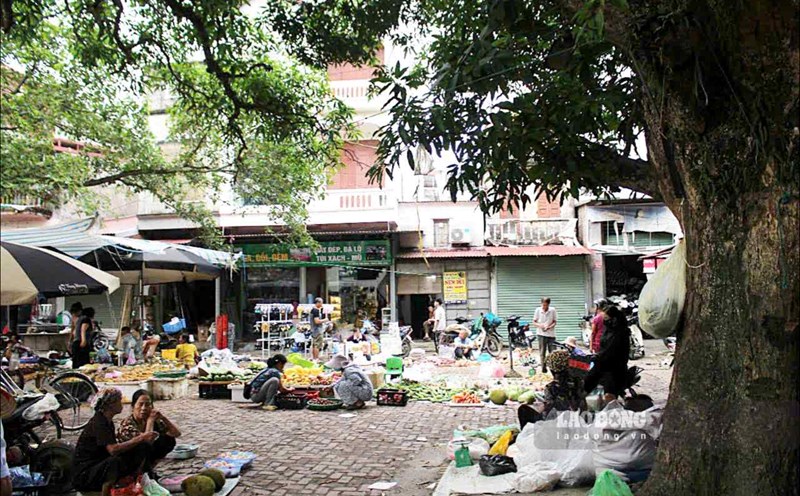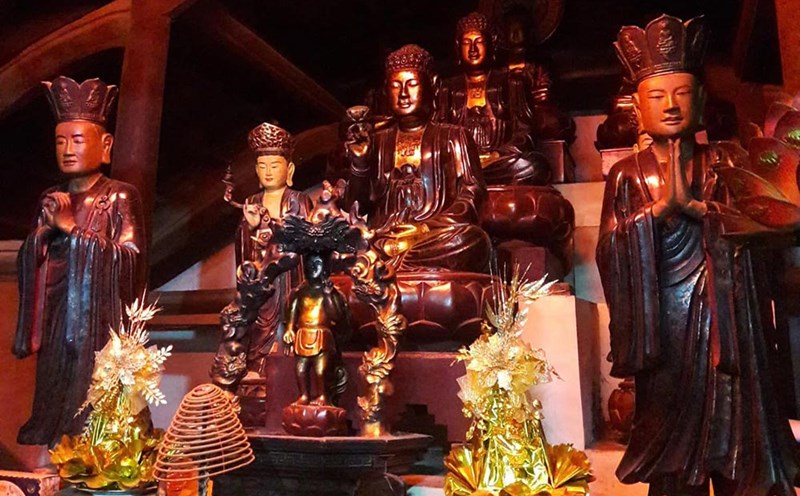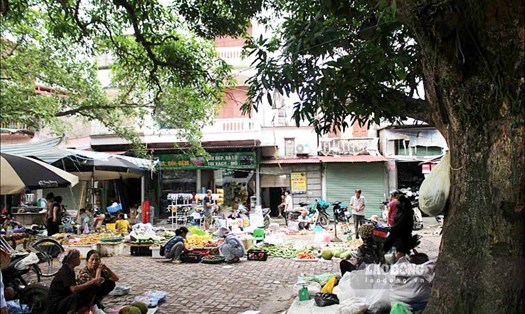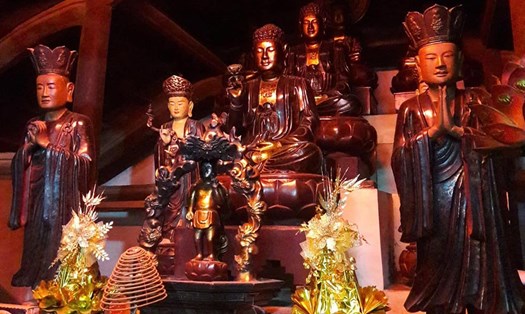Bao Quoc Pagoda, formerly located in Canh Tan Commune, Hung Ha District, Thai Binh Province (old), now Ngu Thien Commune, Hung Yen Province (new).
Bao Quoc Pagoda and Luu Xa Pagoda are national historical relic clusters recognized in 1990.
Along with Luu Xa communal house, Bao Quoc pagoda is a place of worship for four great kings, including two famous historical figures, Thai Luu Khanh Dam and Thai Phuong Luu Dieu, who contributed to the 4 Ly Dynasty kings of the 11th - 12th centuries.
Bao Quoc Pagoda was built during the Ly Dynasty, with the main architecture still almost intact before the fire.
The main pagoda has a Dinh-shaped architecture, including: 5-room front hall, 3-room governmental palace. The front hall is built in the style of a gai gai gai, with a flowing roof covered with nose tiles. The architectural frame is made of ironwood with 4 rows of columns and 6 sets of beams. The Buddhist temple is built in the style of a stele stele with a frame of ironwood.
At the national relic of Bao Quoc pagoda, there are many artifacts from the Nguyen and Le dynasties included in the inventory list.
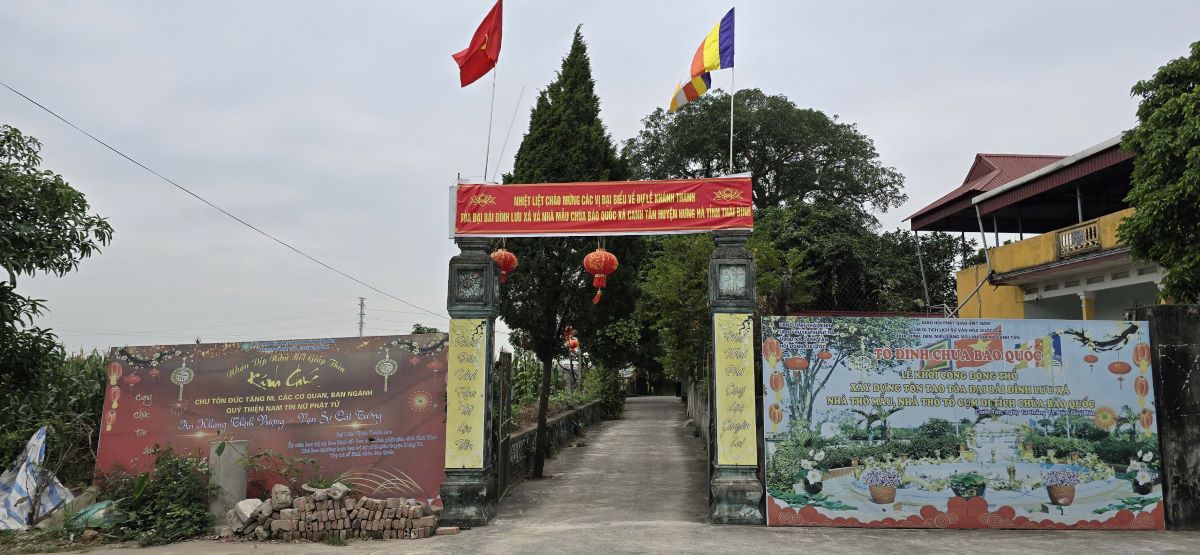
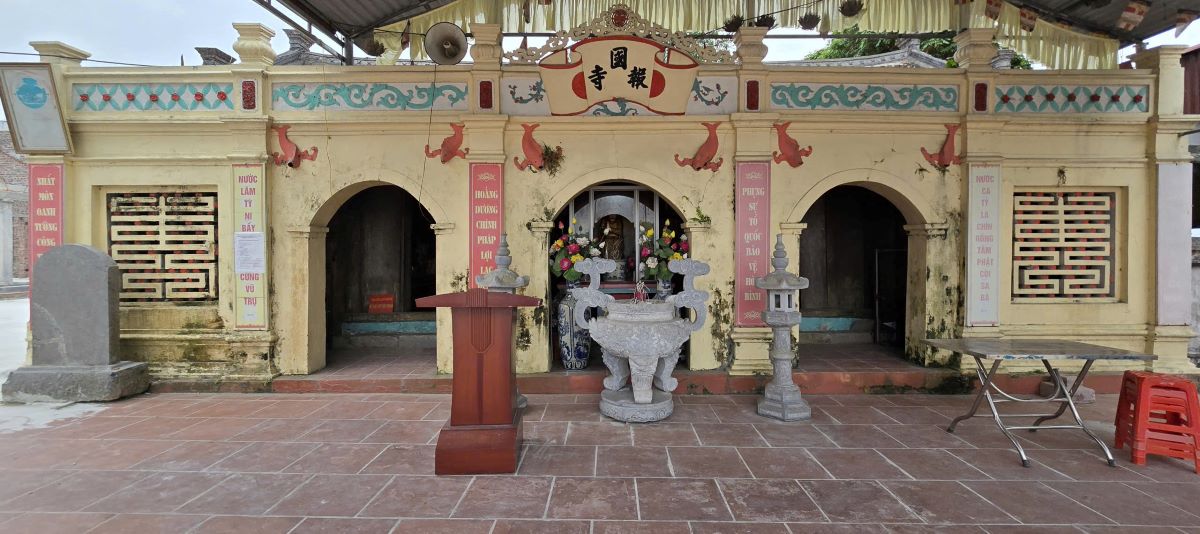
On July 18, speaking with Lao Dong, the leader of the People's Committee of Ngu Thien commune (Hung Yen) confirmed the fire at the national relic of Bao Quoc pagoda.
At around 4:30 a.m. on July 17, the fire was discovered in the front hall of Bao Quoc Pagoda.
Immediately after receiving information about the incident, the authorities were present at the scene to extinguish the fire. By 5:30 a.m. the same day, the fire was basically under control.
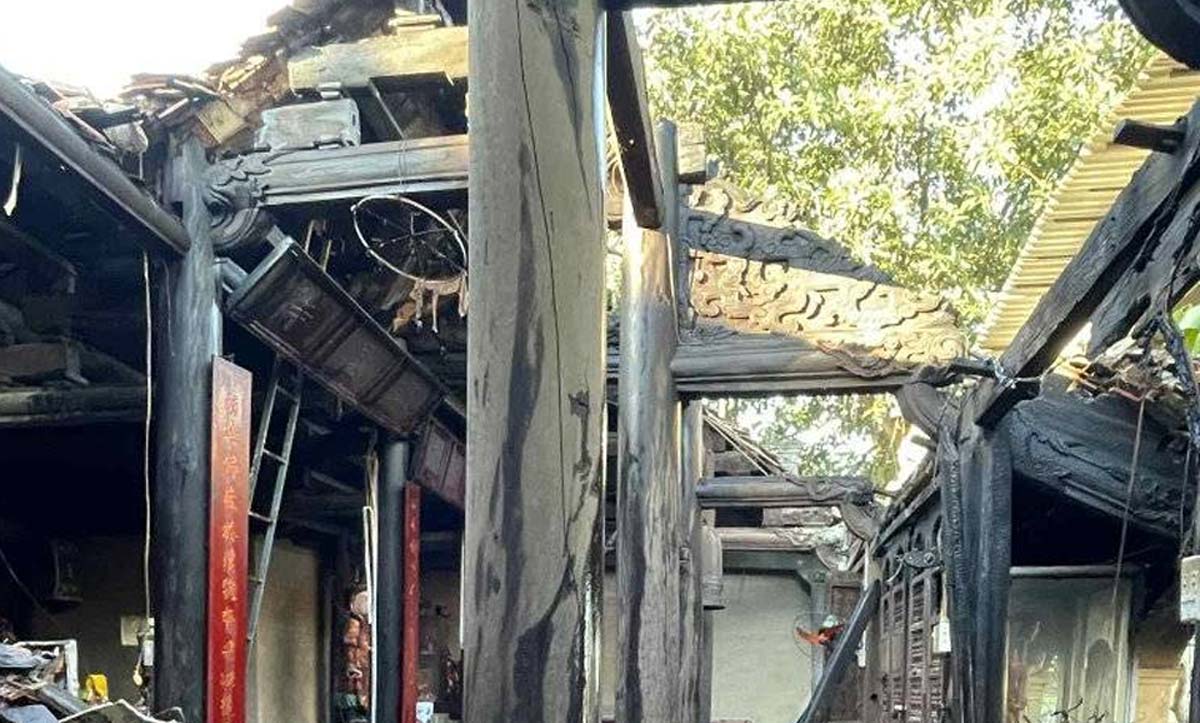
According to the leader of Ngu Thien Commune People's Committee, the initial cause was predicted to be an electrical short circuit.
Currently, the People's Committee of Ngu Thien commune has a direction to implement solutions to overcome the damage. Accordingly, directing plans to protect relics, tie, support, and reinforce the roof of the three- tower building.
Carry out the erection of typical pillars, make corrugated iron roofs to cover the road frontage and cover the front sections with corrugated iron to protect the relic. In addition, the police and security forces at the grassroots level, along with pagodas and people, were deployed to protect the relic.

